This article was medically reviewed by Mark Ziats, MD, PhD. Dr. Mark Ziats is an Internal Medicine Physician, Scientist, Entrepreneur, and the Medical Director of xBiotech. With over five years of experience, he specializes in biotechnology, genomics, and medical devices. He earned a Doctor of Medicine degree from Baylor College of Medicine, a Ph.D. in Genetics from the University of Cambridge, and a BS in Biochemistry and Chemistry from Clemson University. He also completed the INNoVATE Program in Biotechnology Entrepreneurship at The Johns Hopkins University - Carey Business School. Dr. Ziats is board certified by the American Board of Internal Medicine.
There are 15 references cited in this article, which can be found at the bottom of the page.
This article has been viewed 402,384 times.
Medical laboratory tests involve analyzing samples of blood, urine and/or other body fluids or tissues in order to better understand a person's health state.[1] Some lab tests provide precise information about specific health issues, whereas others provide more general information. Your doctor combines information from medical lab tests with a physical exam, health history and other diagnostic tests (such as x-rays or ultrasound) before he/she comes up with a diagnosis for you; however, learning what your lab results mean (especially common blood and urine tests) can help you better understand more about your symptoms and how your body is functioning.
Steps
Understanding Blood Tests
-
1Learn about what a CBC is. One of the most common blood test analyzed in a medical lab is a complete blood count (CBC). A CBC measures the most common types of cells and elements in your blood, such as red blood cells (RBC), white blood cells (WBC), and platelets.[2] RBCs contain hemoglobin, which carries oxygen to all your cells, whereas WBCs are part of your immune system and help to destroy microorganisms such as viruses, bacteria and fungi platelets help your body form blood clots.[3]
- A low hemoglobin count (Hb value 12-16) is part of red blood cells suggests anemia, which can cause hypoxia (not enough oxygen getting to tissues), although too many RBCs (called erythrocytosis) may indicate bone marrow disease.[4]
- A low WBC count (called leukopenia) may also suggest a bone marrow problem or a potential side effect from taking medications — common problem while undergoing chemotherapy for cancer. On the other hand, a high WBC count (called leukocytosis) usually indicates that you're fighting an infection.
- Normal RBC ranges are different between the genders. Men have 20 – 25% more RBCs because they tend to be larger and have more muscle tissue, which requires more oxygen.
-
2Learn about cholesterol panels. Another common blood test is a cholesterol panel (also called a lipid panel). Cholesterol panels are helpful for determining your risk of cardiovascular disease, such as atherosclerosis, heart attack and stroke.[5] A cholesterol/lipid profile includes measurements of your total blood cholesterol (includes all the lipoproteins in your blood), high-density lipoprotein (HDL) cholesterol, low-density lipoprotein cholesterol (LDL) and your triglycerides, which are fats that are usually stored in fat cells.
- Ideally, your total cholesterol should be less than 200 mg/dL and you should have a favorable ratio of HDL (the "good" kind) to LDL (the "bad" kind) that is less than 3.5:1 in order to reduce your risk of cardiovascular disease.[6]
- HDL removes excess cholesterol from the blood and transports it to your liver for recycling. Healthy levels are greater than 50 mg/dL (ideally above 60 mg/dL).
- LDL shuttles cholesterol from your liver to cells that need it, as well as to blood vessels in response to injury and inflammation — this can trigger clogged arteries (called atherosclerosis). Healthy levels are lower than 130 mg/dL (ideally less than 100 mg/dL).
- Doctors look at the results of a cholesterol / lipid profile before determining if you need or could benefit from cholesterol-lowing medication.
Advertisement -
3Appreciate what the CMP is. A comprehensive metabolic panel (CMP) measures other components in your blood, such as electrolytes (charged mineral salts needed for nerve conductance and muscle contraction), organic minerals, protein, creatinine, liver enzymes and glucose.[7] A CMP is typically ordered to determine your overall health, but also to check the function of your kidneys and liver, as well as electrolyte levels and acid/base balance. CMPs are often ordered along with CBCs as part of standard medical exams and annual physicals.
- Sodium is needed for regulating fluid levels and allowing nerves and muscles to function, but too much in the blood causes hypertension (high blood pressure) and increases your risk of cardiovascular disease. Too little can also be dangerous, causing neurological problems. Normal sodium levels are between 136 - 144 mEq/L.
- Liver enzymes (ALT and AST) become elevated when your liver is injured or inflamed — caused by alcoholism, acetaminophen (Tylenol) overdose, gallstones, hepatitis, or autoimmune disorders.
- If your blood urea nitrogen (BUN) and creatinine levels are elevated, that likely means your kidneys have problems. BUN should be between 7 – 29 mg/dL, whereas your creatinine levels should be between 0.8 – 1.4 mg/dL.
-
4Understand blood glucose tests. Another potential component of a CMP is a blood sugar (glucose) test. Blood sugar tests measure the amount of glucose circulating in your bloodstream, usually after fasting for at least eight hours.[8] Glucose tests are usually ordered if your doctor suspects you may have a type of diabetes (types 1 or 2, or gestational). Type 1 diabetes develops when your pancreas doesn't produce enough insulin hormone (which functions to grab glucose from the blood and deliver it to cells) or the cells of your body "ignore" the effects of insulin. Type 2 diabetes develops when your tissues are resistant to the action of insulin, usually because of obesity. Thus, diabetics have chronically high blood glucose levels (called hyperglycemia), which is greater than 125 mg/dL.
- People at high risk for diabetes have blood sugar levels between 100 – 125 mg/dL — if you're in this range, you might be referred to as "pre-diabetic."
- Persistently high glucose levels can cause damage to organs in the long-term and result in the complications of diabetes like heart disease, kidney disease, eye disease, and neuropathy.
- Keep in mind there are other causes of high blood sugar, such as chronic stress, kidney disease, hyperthyroidism and a cancerous or inflamed pancreas gland.
- Very low levels of glucose (less than 70 mg/dL) is called hypoglycemia and can be caused by taking too much insulin medication, alcoholism and failure of various organs (liver, kidneys and/or heart).
Understanding Urine Lab Tests
-
1Learn what urine analysis (urinalysis) screens for. A urinalysis detects the byproducts of normal/abnormal metabolism, cells, protein and bacteria in urine.[9] Healthy urine is typically clear looking, without a bad odor and sterile, which means without significant numbers of bacteria. Many metabolic and kidney disorders can be caught in their early stages by screening for abnormalities via urinalysis. These abnormalities can include higher-than-normal concentrations of glucose, protein, bilirubin, RBCs, WBCs, uric acid crystals and bacteria.
- Your doctor may recommend urinalysis if she suspects a metabolic condition (like diabetes), kidney disease or a urinary tract infection (UTI).[10]
- For urinalysis, you'll need to collect 1 – 2 ounces of mid-stream urine (not the initial portion out of your urethra) into a sterile plastic cup. Collecting the sample first thing in the morning is usually recommended. Don't forget to clean your genitals thoroughly before collecting a urine sample, particularly if you're menstruating.
- The reason it needs to be midstream: there will be bacteria on the skin near the opening if your urethra normally. The initial flow of urine will contain some of these bacteria.
- Your urine sample is analyzed three ways in the lab: via visual exam, dipstick test and microscopic exam.[11]
-
2Understand the lab results that suggest a metabolic/kidney problem. Most metabolic and kidney problems don't create obvious symptoms, at least in their initial stages. General feelings of tiredness and lack of energy are common, but are difficult to relate to kidney or glandular dysfunction. An analysis of your urine can suggest that a problem exists, although it's not definitive by itself — blood tests, physical exam and other tests (ultrasound, MRI) are often required also.[12]
- Normally, there isn't significant amounts of protein (albumin) in urine; however, when urine protein levels are high (called proteinuria), it can be an early sign of kidney disease.[13] Proteinuria is also common with multiple myeloma and various types of cancer.
- Kidney disease can also cause blood (RBCs) to be in urine, as well as high acidity and specific gravity (the concentration of the urine). Crystals in your urine may be a sign of kidney stones or gout.
- The presence of sugar (glucose) and ketones in your urine may be indicative of diabetes.[14] Thus, diabetics have too much glucose in both their blood and urine.You may have just high ketones but not glucose in your urine if you haven't been eating much lately.
-
3Learn how to correlate symptoms of a UTI to the lab results. Another common reason for getting your urine analyzed is if a urinary tract infection (UTI) is suspected.[15] A UTI usually involves just the urethra (urethritis), but can also involve the bladder (cystitis) and kidneys (pyelonephritis) in more severe cases. UTIs are much more common in women compared to men — about 40% of American women have at least one in their lifetime.[16] Symptoms of a UTI are much more obvious than the early stages of kidney or metabolic disorders. Frequent and/or painful (burning) urination, dark colored urine, urine in the blood, feeling like you need to go again right after urinating, lower abdominal pain, back pain and a mild fever are the most common signs of a UTI.
- The main evidence of a UTI from the dipstick portion of urinalysis is the presence of nitrites or leukocyte esterase (a product of WBCs).[17]
- Under the microscope, WBCs (a sure sign of infection/inflammation), bacteria and possibly RBCs will be seen if you have a UTI.
- Although numerous bacteria can cause a UTI, most are due to E. coli, which are commonly found in stool.
-
4Recognize other important lab results. Other conditions and diseases can be identified from urinalysis also, such as liver disease or inflammation, kidney and bladder cancer, chronic inflammation somewhere in the body and pregnancy.[18] These parameters aren't always looked at routinely in the medical blood lab, so your doctor might have to request them specifically.
- Bilirubin is a byproduct of RBC breakdown and normally not found in urine. Any bilirubin in your urine can indicate liver damage or disease, such as cirrhosis or hepatitis. It may also indicate gallbladder disease.
- The presence of abnormal looking cells, as well as WBCs and RBCs in the urine, can be indicative of cancer somewhere in the genitourinary system.[19] If cancer is suspected, blood tests and cell cultures are usually performed too.
- If you suspect you're pregnant because you missed your period, urinalysis can be helpful for confirming it. The medical lab will look for human chorionic gonadotropin (hCG) in your urine sample, which is a hormone made by the placenta of pregnant women.[20] The hormone can also be detected in the blood, although pregnancy test kits sold at pharmacies measure hCG in urine.
Expert Q&A
Did you know you can get expert answers for this article?
Unlock expert answers by supporting wikiHow
-
QuestionWhat does it mean if the results of my urine test "urine blood" says small H?
 Mark Ziats, MD, PhDDr. Mark Ziats is an Internal Medicine Physician, Scientist, Entrepreneur, and the Medical Director of xBiotech. With over five years of experience, he specializes in biotechnology, genomics, and medical devices. He earned a Doctor of Medicine degree from Baylor College of Medicine, a Ph.D. in Genetics from the University of Cambridge, and a BS in Biochemistry and Chemistry from Clemson University. He also completed the INNoVATE Program in Biotechnology Entrepreneurship at The Johns Hopkins University - Carey Business School. Dr. Ziats is board certified by the American Board of Internal Medicine.
Mark Ziats, MD, PhDDr. Mark Ziats is an Internal Medicine Physician, Scientist, Entrepreneur, and the Medical Director of xBiotech. With over five years of experience, he specializes in biotechnology, genomics, and medical devices. He earned a Doctor of Medicine degree from Baylor College of Medicine, a Ph.D. in Genetics from the University of Cambridge, and a BS in Biochemistry and Chemistry from Clemson University. He also completed the INNoVATE Program in Biotechnology Entrepreneurship at The Johns Hopkins University - Carey Business School. Dr. Ziats is board certified by the American Board of Internal Medicine.
Internal Medicine Physician
-
QuestionWhat do the acronyms HGB, HCT, and MCH stand for?h
 Mark Ziats, MD, PhDDr. Mark Ziats is an Internal Medicine Physician, Scientist, Entrepreneur, and the Medical Director of xBiotech. With over five years of experience, he specializes in biotechnology, genomics, and medical devices. He earned a Doctor of Medicine degree from Baylor College of Medicine, a Ph.D. in Genetics from the University of Cambridge, and a BS in Biochemistry and Chemistry from Clemson University. He also completed the INNoVATE Program in Biotechnology Entrepreneurship at The Johns Hopkins University - Carey Business School. Dr. Ziats is board certified by the American Board of Internal Medicine.
Mark Ziats, MD, PhDDr. Mark Ziats is an Internal Medicine Physician, Scientist, Entrepreneur, and the Medical Director of xBiotech. With over five years of experience, he specializes in biotechnology, genomics, and medical devices. He earned a Doctor of Medicine degree from Baylor College of Medicine, a Ph.D. in Genetics from the University of Cambridge, and a BS in Biochemistry and Chemistry from Clemson University. He also completed the INNoVATE Program in Biotechnology Entrepreneurship at The Johns Hopkins University - Carey Business School. Dr. Ziats is board certified by the American Board of Internal Medicine.
Internal Medicine Physician
-
QuestionWhy were my blood creatinine level results of 0.57 mg/dL flagged?
 Mark Ziats, MD, PhDDr. Mark Ziats is an Internal Medicine Physician, Scientist, Entrepreneur, and the Medical Director of xBiotech. With over five years of experience, he specializes in biotechnology, genomics, and medical devices. He earned a Doctor of Medicine degree from Baylor College of Medicine, a Ph.D. in Genetics from the University of Cambridge, and a BS in Biochemistry and Chemistry from Clemson University. He also completed the INNoVATE Program in Biotechnology Entrepreneurship at The Johns Hopkins University - Carey Business School. Dr. Ziats is board certified by the American Board of Internal Medicine.
Mark Ziats, MD, PhDDr. Mark Ziats is an Internal Medicine Physician, Scientist, Entrepreneur, and the Medical Director of xBiotech. With over five years of experience, he specializes in biotechnology, genomics, and medical devices. He earned a Doctor of Medicine degree from Baylor College of Medicine, a Ph.D. in Genetics from the University of Cambridge, and a BS in Biochemistry and Chemistry from Clemson University. He also completed the INNoVATE Program in Biotechnology Entrepreneurship at The Johns Hopkins University - Carey Business School. Dr. Ziats is board certified by the American Board of Internal Medicine.
Internal Medicine Physician
Warnings
- This article in no way intends or purports to give medical advice. For medical advice, please check with your healthcare provider.⧼thumbs_response⧽
- Never use your lab results to treat yourself. Lab results are only one part of a broad array of tools a doctor uses to diagnose and manage diseases.⧼thumbs_response⧽
- Every test has a potential to be wrong due to many factors. This may result in false positive or negative result or even incorrect levels. Therefore most of the test are done at least twice to confirm them. However, in some cases the results may be absolute (usually in a test that looks for abnormalities in a sample and they are not present in any amount) - those test are usually marked "DNR", meaning "Did Not Retest".⧼thumbs_response⧽
References
- ↑ http://www.cancer.gov/about-cancer/diagnosis-staging/understanding-lab-tests-fact-sheet
- ↑ http://www.medicinenet.com/complete_blood_count/page2.htm#tocd
- ↑ http://www.medicinenet.com/complete_blood_count/page6.htm
- ↑ http://www.mayoclinic.org/diseases-conditions/anemia/basics/definition/con-20026209
- ↑ https://labtestsonline.org/understanding/analytes/lipid/tab/test/
- ↑ http://www.mayoclinic.org/diseases-conditions/high-blood-cholesterol/expert-answers/cholesterol-ratio/faq-20058006
- ↑ https://labtestsonline.org/understanding/analytes/cmp/tab/test
- ↑ https://labtestsonline.org/understanding/analytes/glucose/tab/test
- ↑ https://labtestsonline.org/understanding/analytes/urinalysis/tab/sample/
- ↑ https://labtestsonline.org/understanding/analytes/urinalysis/tab/sample/
- ↑ http://www.mayoclinic.org/tests-procedures/urinalysis/basics/results/prc-20020390
- ↑ http://www.mayoclinic.org/tests-procedures/urinalysis/basics/definition/prc-20020390
- ↑ https://labtestsonline.org/understanding/analytes/urinalysis/ui-exams?start=1
- ↑ http://www.mayoclinic.org/tests-procedures/urinalysis/basics/results/prc-20020390
- ↑ https://labtestsonline.org/understanding/conditions/uti
- ↑ https://labtestsonline.org/understanding/conditions/uti
- ↑ http://www.mayoclinic.org/tests-procedures/urinalysis/basics/results/prc-20020390
- ↑ http://www.mayoclinic.org/tests-procedures/urinalysis/basics/results/prc-20020390
- ↑ http://www.cancer.gov/about-cancer/diagnosis-staging/understanding-lab-tests-fact-sheet
- ↑ https://labtestsonline.org/understanding/analytes/hcg/tab/sample/
- ↑ https://labtestsonline.org/understanding/analytes/psa/tab/test/
About This Article
Learning how to read your medical laboratory results means you can better understand your symptoms and how your body is functioning. One of the most common blood tests analyzes complete blood count, or CBC. A low hemoglobin count suggests anemia, though too many RBCs can indicate bone marrow disease. A low WBC count can also suggest bone marrow problems, while a high WBC count usually means that you’re fighting an infection. If your doctor is checking your cholesterol, your total number should be less than 200, with your HDL levels greater than 50 and your LDL numbers lower than 130. Blood sugar or glucose tests measure the amount of glucose circulating in your bloodstream after fasting. People at high risk for diabetes have blood sugar levels between 100 and 125. For more tips from our Medical co-author, including how to understand urine lab tests, keep reading!


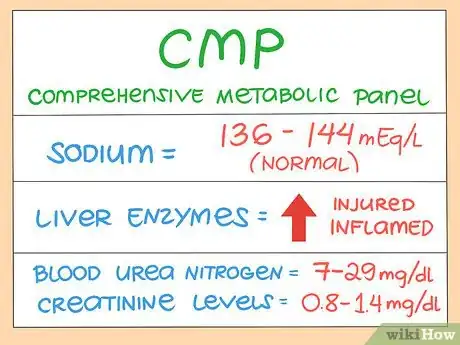

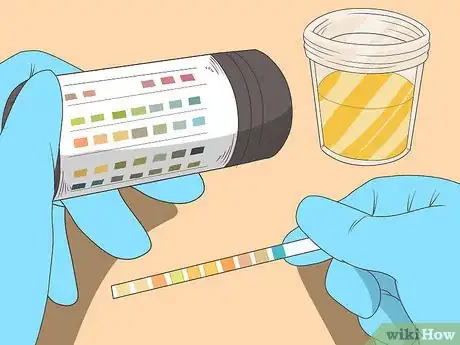

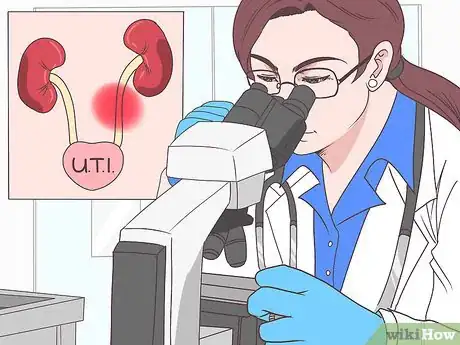







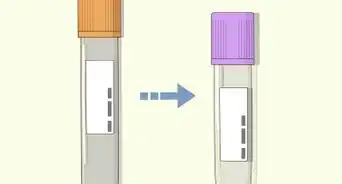
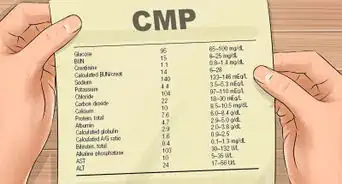



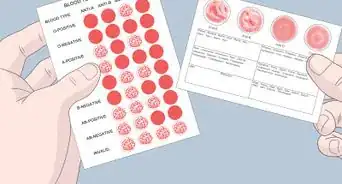

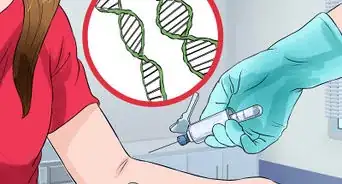

















































Medical Disclaimer
The content of this article is not intended to be a substitute for professional medical advice, examination, diagnosis, or treatment. You should always contact your doctor or other qualified healthcare professional before starting, changing, or stopping any kind of health treatment.
Read More...